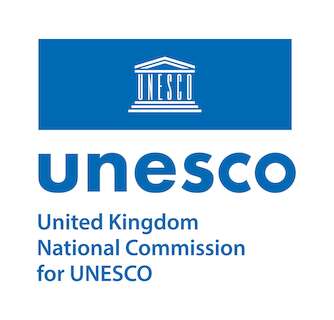Reflections on the latest data from the Department for Culture, Media and Sport (DCMS) 2023/24 ‘Participation Survey'
UKNC’s Project Implementation Manager, Liam Smyth, responds to the latest DCMS Participation Survey data, which suggests that engagement with UNESCO-designated heritage sites is on the rise in the UK. He reflects on the new developments and opportunities to build on this growth pattern and ensure more people benefit from the UK’s membership to UNESCO.
The latest annual release of the UK’s Department for Culture, Media, and Sport’s (DCMS) ‘Participation Survey‘ data was published on Wednesday 24 July 2024. This is DCMS’ main evidence source and provides statistically representative national estimates of adult engagement with the DCMS sectors.
Previous iterations of the survey have informed policy and led to strategic programmes like Arts Council England’s £108m Creative People and Places and Historic England’s £95m High Street Heritage Action Zones.
This year, the Participation Survey was delivered in partnership with Arts Council England through local authorities and used a much larger dataset, meaning it’s the most granular and representative sample size yet.
The big headline for UNESCO in the UK is that 10% of adults in England say that they had visited a UNESCO Site in the past 12 months.
While acknowledging the more granular nature of this survey, this represents a 42% increase on last year’s results (7%) and means that, since the survey began in 2021, UNESCO Sites have risen in popularity faster than any other type of heritage site amongst adults in England.
However, ‘UNESCO Sites’ remain the least popular option in the Participation Survey, ranking lower than ‘National Trust’ (61%), ‘English Heritage’ (38%), ‘Some other heritage site’ (16%) and ‘None of these’ (15%).
As the Participation Survey relies on self-reported data, there are reasons to query the veracity of the results. People who visit UNESCO Sites could be unaware of their UNESCO designation. For example, our own geospatial analysis suggests that approximately 20% of people in the UK live in, or in close proximity to, a land-based UNESCO designation. Furthermore, the Participation Survey shows that 64% of adults in England have holidayed domestically, with Visit Britain’s top five most popular counties for domestic tourism sharing no fewer than 13 UNESCO-designated sites between them.
According to the Association of Leading Visitor Attractions (ALVA), the 11 UNESCO World Heritage Sites that are ALVA-members clocked up 14,262,868 visitors in 2023. Based on these projections, it is likely that many more adults in England are visiting UNESCO Sites but are unaware they are doing so. This suggests the issue lies more with a need to better promote the UNESCO brand in the UK.
Opportunities to increase engagement in UNESCO Sites
The past 12 months have seen a range of awareness-building activities at local and national level. Hyperlocal interventions such as Exeter City of Literature’s innovative collaboration with Great Western Railway for World Book Day 2024 means that visitors to Exeter St Davids are immediately met with artwork celebrating the city’s UNESCO designation and literary heritage. National campaigns such as UKNC’s Summer 2023 Discover UNESCO Sites map were the National Lottery Heritage Fund’s most popular webpage last year – an 830% increase on their benchmark for web traffic. Likewise, Scotland’s UNESCO trail built on its previous success by being included in Rough Guides’ 24 best destinations to visit in 2024.
Good quality audience development isn’t just concerned with ‘how many’ but also ‘who’ we are engaging. The Participation Survey shows that the heritage sector reaches an unnecessarily narrow audience demographic. Around 34% of survey respondents say they have not visited a heritage site in the past 12 months, a comparable figure to previous years. There is a lot of variation in how adults of different ages and ethnic groups engaged with the heritage sector and some variation for adults from different deprivation deciles or socio-economic classifications. ‘No reason in particular’ (32%) and ‘I’m not interested’ (25%) were the most common barriers cited for not engaging with the heritage sector.
There is a role for UNESCO Sites in building more inclusive audiences by championing human-centred approaches. To support this, UKNC have been working with The Audience Agency over the past 12 months to co-create an Audience Development Toolkit for UNESCO Sites in the UK. The toolkit will be published on our website later this year and will support innovative and sustainable practices to broaden and deepen engagement with audiences. This work is also informing our Climate Change and UNESCO Heritage project with DCMS.
Intangible Cultural Heritage: a gamechanger for the UK culture and heritage sector
A promising opportunity to increase heritage engagement is the UK Government’s recent ratification of the UNESCO Convention on Intangible Cultural Heritage (ICH) in April 2024. ICH or ‘Living Heritage’ recognises traditions or living expressions inherited from our ancestors and passed on to our descendants. This includes oral traditions, performing arts, social practices, rituals, festive events, knowledge and practices concerning nature and the universe or the knowledge and skills to produce traditional crafts.
In 2022, I was a consultant and co-author of Arts Council England’s industry report on Everyday Creativity, which made a number of recommendations for how cultural sector organisations can support ICH activities in their communities. To this degree, ICH could be a game changer in increasing UNESCO Sites’ scope for engagement.
Take for example, my regional home of the West Midlands, which the Participation Survey consistently ranks as the lowest in engagement with museums (35% compared to national average of 46%) and heritage sites (62% compared to national average of 69%). This could lead to a misapprehension that there is a regional dearth in cultural engagement.
Yet, the people of the West Midlands live culturally rich lives. Sandwell’s annual Mela is the biggest South Asian Music Festival in Europe, while Birmingham has won the National 12-bell Striking Contest 26 times since the competition launched in 1976 – more than all other competitors combined. What both of these ICH activities have in common is that they have previously been hosted by multiple UNESCO Sites (one Global Geopark, one World Heritage Site and four Creative Cities) – demonstrating the potential for UNESCO Sites to combine their offer with ICH.
Some final thoughts…
There are exciting opportunities on the horizon for increasing awareness and engagement with UNESCO Sites in the UK. Central to this will be communities, as basic stakeholders of heritage in the UK. The Participation Survey tells us that awareness of UNESCO Sites is on the rise but there remains great potential in advancing audience development practices.
UKNC will continue to support UNESCO Sites in increasing community ownership of heritage, supporting our wider cultural offer and engaging historically marginalised audiences in ways that are inclusive, sustainable and innovative.







